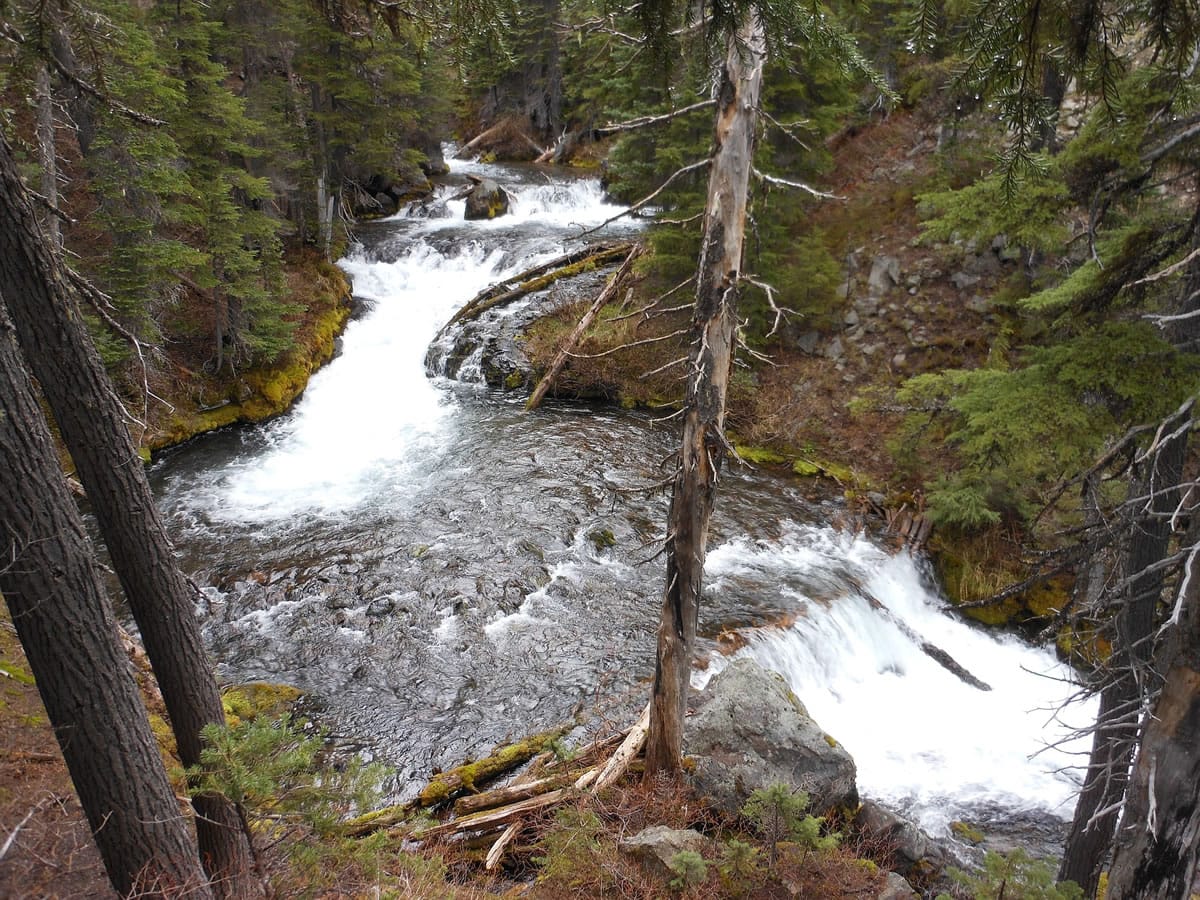SISTERS, Ore. — Chris Sabo has hiked and explored trails in the Central Oregon Cascades for the last 35 years.
As a trails specialist for the U.S. Forest Service in Bend, he has intimate knowledge of which trails are clear of snow, and when.
After an exceptionally mild winter, this year the hiking season on upper-elevation trails in the Three Sisters Wilderness will start early — so early, in fact, that it has already started.
The bare ground near Dutchman Flat Sno-park, which has been free of snow for nearly a month, is evidence of just how early trails are becoming accessible.
“It’s the earliest I can recollect,” Sabo says. “This is the earliest I can remember Dutchman Flat being unskiable. Normally, people are still snowmobiling on it this time of year. We’re already at the level of late June or Fourth of July. We’re well in advance of normal. But there’s still substantial snow above a certain elevation that folks will be contending with for some time.”
With that in mind, I drove up May 21 past Dutchman Flat and Mount Bachelor and into the Three Sisters Wilderness. The plan was to see just how far I could hike on some of the area’s most popular trails before running into snow.
I started at the Green Lakes Trailhead, one of the most boot-worn summertime trails in the Northwest, and hiked for about a mile before encountering significant patches of snow blocking the trail.
After walking over three or four of those snow-covered areas, I decided to turn around and head back to the trailhead. I was able to hike far enough along the trail to see some of the elegantly trickling waterfalls along Fall Creek, but it likely will be a few weeks yet before the trail all the way to Green Lakes is free of snow.
The next destination was the South Sister Climber Trail, just a few miles farther southwest along Cascade Lakes Highway. The trail, which leads all the way to the summit of 10,358-foot South Sister, ascends steeply from the highway through a thick forest of lodgepole pine trees. I did not see any snow at all until about 1 1/2 miles into the hike, and the snow patches quickly got bigger and bigger as I continued to ascend.
Some of those snow patches had footprints in them, but I turned around soon thereafter, knowing the amount of snow would only increase as I gained elevation. Also, a steady rain had begun falling, and I was ready to get back to the car.
Sabo says the snow line in the Three Sisters Wilderness last week ranged from about 6,000 to 6,500 feet. On the west side of the Cascade crest the snow line was lower, about 5,200 to 5,500 feet, according to Sabo.
The snow should start melting fast with warmer temperatures, but some hikers have been pushing it too far, too early in the season on the South Sister and Pacific Crest trails.
“If they hike over snow, and they’re getting into sectional snow, where you can’t see bare ground ahead of you, they could potentially lose the trail,” Sabo says. “That just happened on South Sister. We ask folks to stay on the trail as best they can, not go down and around or up and around. That’ll create a braided trail network that is highly impacting. Stay on the trail and hike up and over that snow to connect to a bare patch. There’s no markers to keep you on the trail. It happens every year. They (some hikers) push it too far.”
On May 16, Sabo says, a few climbers hiked through snow to reach the summit of South Sister, but a storm moved in as they began their descent, and they lost the trail. A Deschutes National Forest employee later found the climbers and led them down the trail safely.
Another problem with hiking through snow is the potential for postholing — which occurs when hikers break through the crust and sink to their knees or deeper in snow.
After such a mild winter, this spring the snowpack is abnormally soft, or “rotten,” as Sabo calls it. This makes for a greater danger of postholing.
“We’ve been hearing lots of incidences of postholing, as deep as crotch-deep,” Sabo says. “You can also seriously injure a leg in some cases.”
On the same weekend that climbers on South Sister were rescued, three backpackers called search and rescue due to excessive postholing and losing sight of the snow-covered Pacific Crest Trail north of Santiam Pass, according to Sabo. The hikers were found and led to safety.
Sabo advises Central Oregon hikers to carry ice crampons or snowshoes if they expect to encounter snow in the early season. They should also pay attention to weather forecasts, especially if climbing South Sister, where “visibility can go to nothing in short order,” Sabo notes.
In many years, South Sister climbers encounter snow on the upper reaches of the trail even in August. This year, Sabo estimates, the South Sister trail will be about 95 percent snow-free by late June.
But even as the snow recedes, Forest Service crews still need time to clear those areas of trail from blowdown (trees, logs and branches that have fallen and are blocking the trail).
“There’s still a lot of blowdown,” Sabo says. “Even though the snow conditions are at late-June levels, the clearing of the trails is not.”
So hikers can still expect snow and blowdown on upper-elevation trails in the Central Oregon Cascades. But they should not be surprised if this late spring and early summer they can go farther and higher than normal on their favorite scenic paths.



